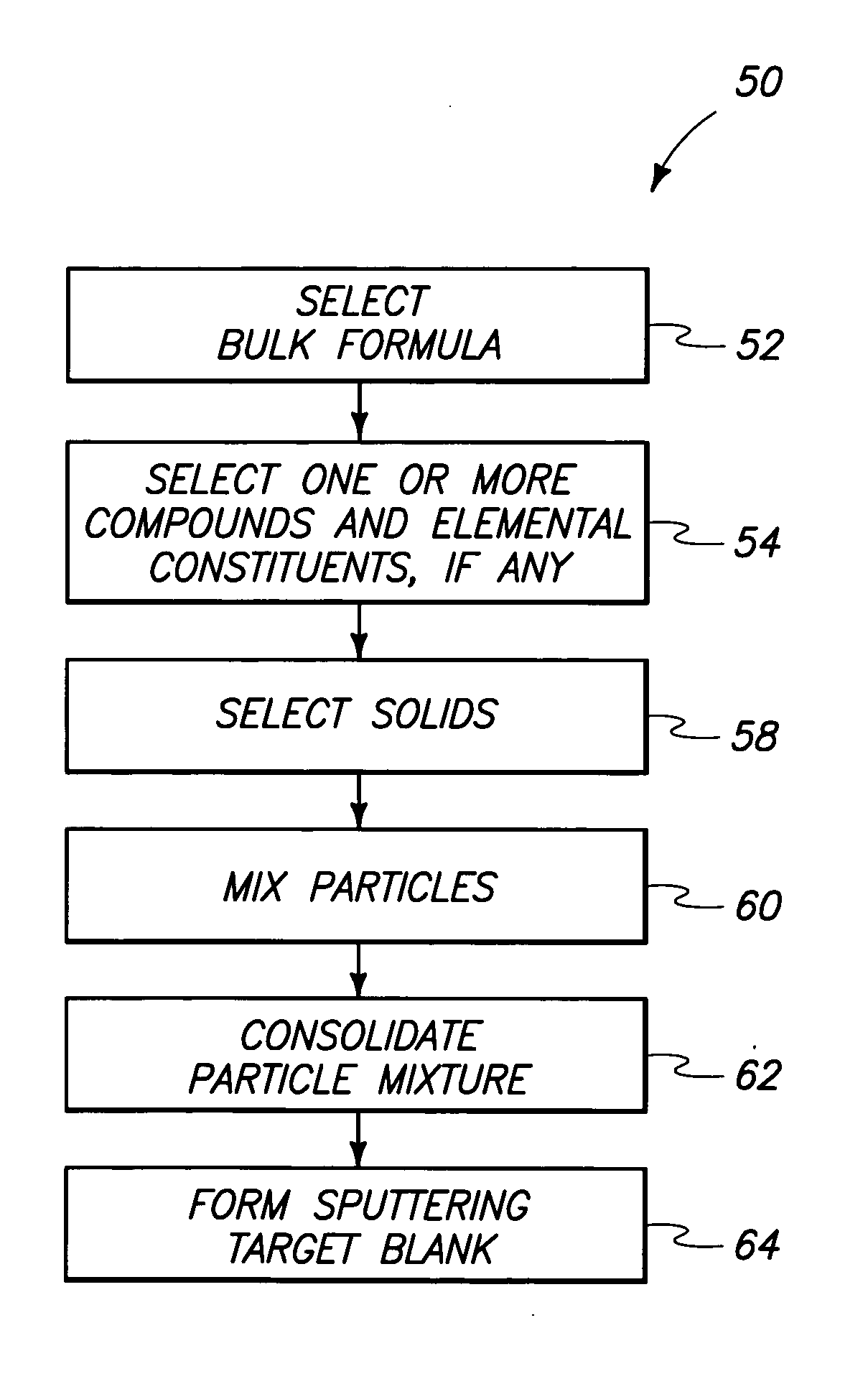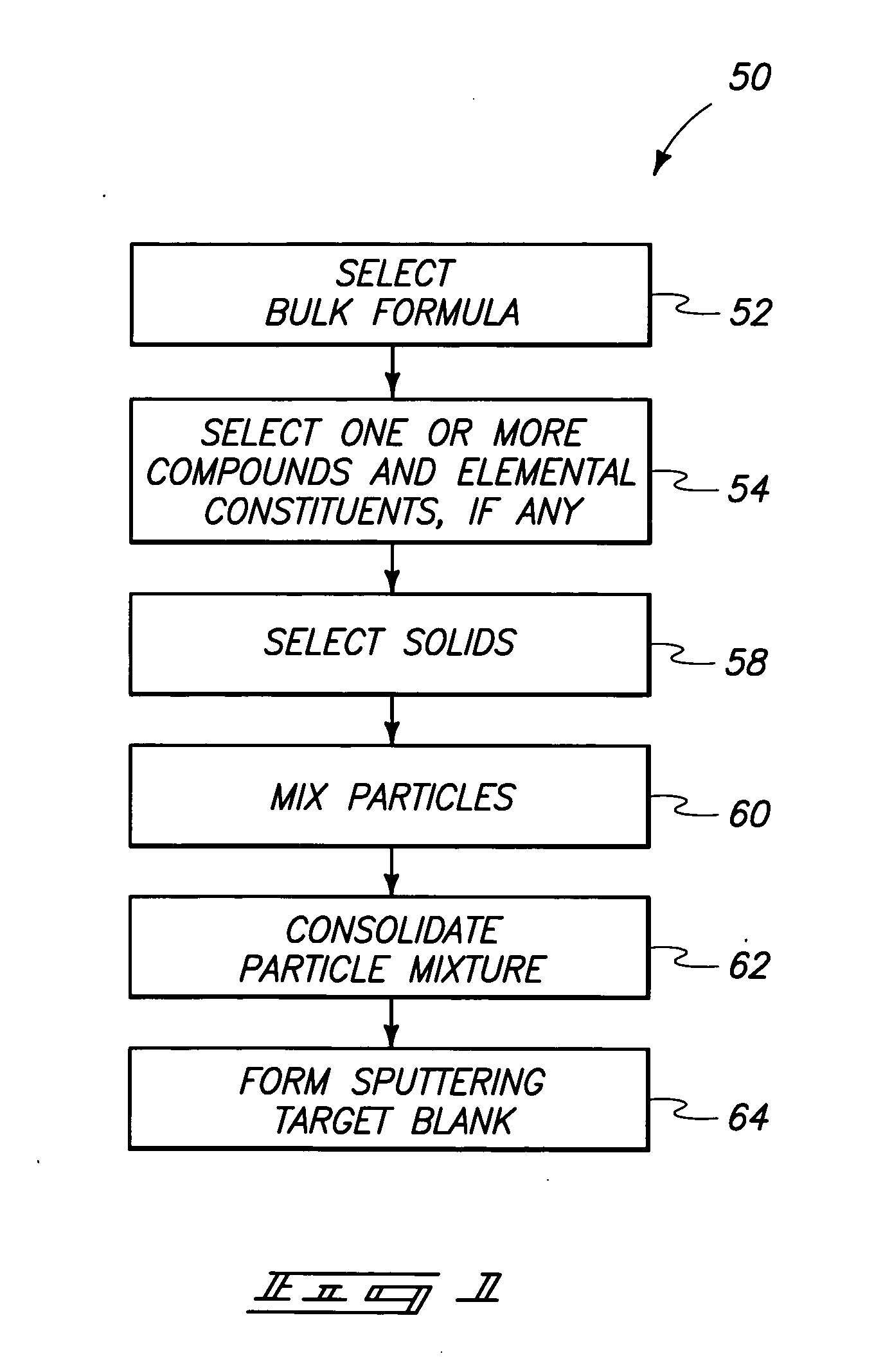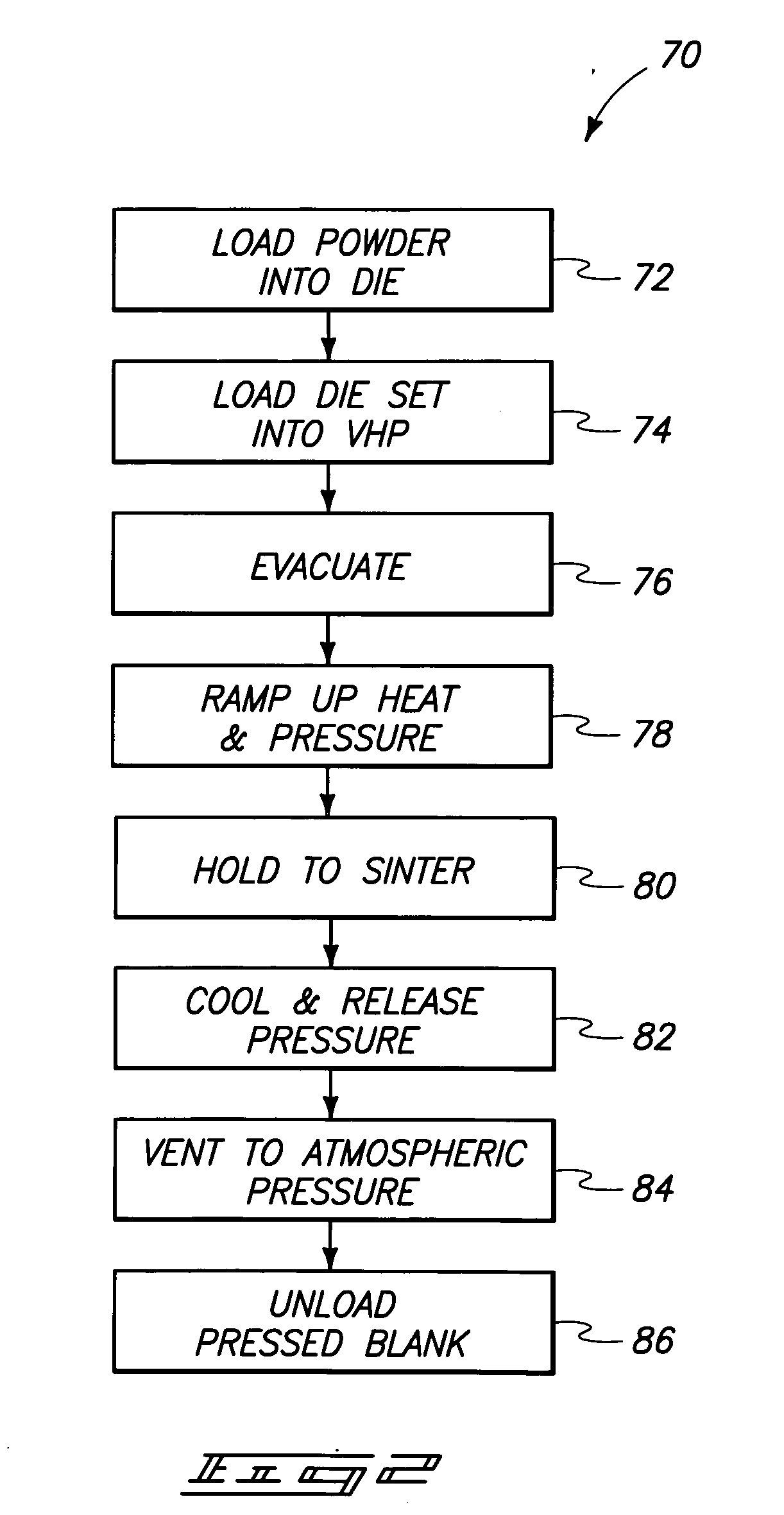Chalcogenide PVD components and methods of formation
a technology of chalcogenide and pvd, which is applied in the direction of sustainable manufacturing/processing, final product manufacturing, vacuum evaporation coating, etc., can solve the problem that no chalcogenide alloys have been identified
- Summary
- Abstract
- Description
- Claims
- Application Information
AI Technical Summary
Problems solved by technology
Method used
Image
Examples
Embodiment Construction
[0015] In most PVD processes, the only significant deposition occurs from a target containing the desired material. However, in some PVD processes non-target components of the deposition apparatus may significantly contribute to deposition and thus contain the same material as the target. In the context of the present document, a PVD “component” is defined to include targets as well as other non-target components, such as ionization coils. Similarly, “PVD” is defined to include sputtering, evaporation, and ion plating as well as other physical vapor deposition methods known to those of ordinary skill.
[0016] Phase change memory research often involves identification of particular compositional formulations with two or more alloying elements. Unfortunately, composition control presents a difficulty in forming chalcogenide alloy PVD components. Generally, the elements of a given alloy may exhibit a wide range, in some cases more than 1,000° C., of melting or sublimation temperatures, ...
PUM
| Property | Measurement | Unit |
|---|---|---|
| Temperature | aaaaa | aaaaa |
| Length | aaaaa | aaaaa |
| Fraction | aaaaa | aaaaa |
Abstract
Description
Claims
Application Information
 Login to View More
Login to View More - R&D
- Intellectual Property
- Life Sciences
- Materials
- Tech Scout
- Unparalleled Data Quality
- Higher Quality Content
- 60% Fewer Hallucinations
Browse by: Latest US Patents, China's latest patents, Technical Efficacy Thesaurus, Application Domain, Technology Topic, Popular Technical Reports.
© 2025 PatSnap. All rights reserved.Legal|Privacy policy|Modern Slavery Act Transparency Statement|Sitemap|About US| Contact US: help@patsnap.com



